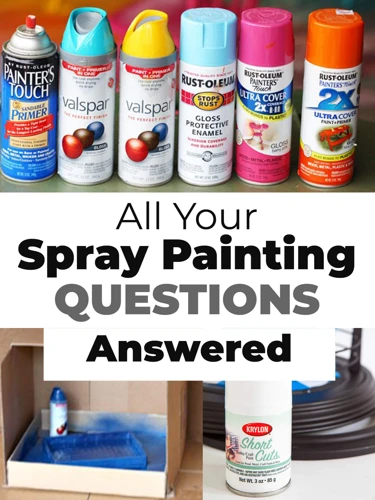Embarking on a painting project can be an exciting way to refresh your living space or revitalize the exterior of your home. However, it’s easy to fall victim to common painting errors that can mar the final result. Whether you’re a seasoned DIY enthusiast or a first-time painter, awareness of these pitfalls is crucial for achieving a professional-looking finish. In this article, we’ll explore the typical blunders that occur during painting projects and provide painting tips to help you avoid them.
Understanding Painting Mistakes
Interior Painting Guide
Interior painting can transform a room, but it’s not without its challenges. One of the most frequent house painting errors is neglecting surface preparation, resulting in paint that peels or chips prematurely. Not allowing adequate drying time between coats and using the wrong type of brush or roller can also lead to unsatisfactory outcomes. With careful planning and the right techniques, these mistakes can be circumvented.
Exterior Painting Pitfalls
The exterior of your home is subject to the whims of nature, making exterior painting a unique challenge. Common issues include ignoring the weather forecast, applying paint on damp surfaces, or choosing the wrong time of day, which can all compromise the durability of your paint job. Additionally, failing to address issues like rot or mold before painting can lead to significant damage over time.
Avoiding Painting Mistakes
Proper Paint Storage Tips
Ensuring your paint remains in optimal condition starts with proper storage. To avoid painting mistakes, store paint cans in a cool, dry place and ensure they are sealed tightly to prevent drying out. Keeping paint away from extreme temperatures will preserve its consistency and pigmentation, ready for your next project.
Importance of Using Quality Tools
Using high-quality brushes, rollers, and other tools is integral to a successful paint job. Inferior tools can shed bristles, leave streaks, or fail to provide even coverage, all of which are common painting errors. Investing in good tools not only makes the application process smoother but also affects the longevity of your work.
The Right Time to Remove Tape
Painter’s tape is a valuable tool for achieving clean lines, but timing its removal is key. A common mistake is leaving the tape on too long, which can cause it to bond with the drying paint. Removing the tape too soon, however, might lead to smudging. The best practice is to peel off the tape once the paint has set but is still a bit tacky.
Preparation: The Key to Avoiding DIY Painting Pitfalls
Cleaning Walls Before Painting
One of the most crucial painting tips for a flawless finish is to start with a clean canvas. Dust, grease, and grime on your walls can impede paint adhesion, leading to an uneven application. A thorough cleaning with a damp cloth or a mild detergent can make a world of difference in the final appearance of your paint job.
The Role of Primer in House Painting
Primer is often overlooked by eager painters, but it’s a pivotal step in preventing DIY painting pitfalls. Primer serves as an adhesive layer that ensures better paint adhesion and enhances the paint’s true color. It’s especially important when painting over dark colors or when dealing with porous surfaces that may absorb paint unevenly.
Selecting the Appropriate Paint
Choosing the Correct Type of Paint
There’s a vast array of paint types available, each formulated for specific applications and conditions. Selecting the correct type of paint is essential for both interior and exterior projects. Water-based paints are typically easier to work with and clean up, while oil-based paints are valued for their durability and rich finish.
Considering Paint Sheen and Stain Prevention
Sheen can greatly affect the appearance and maintenance of painted surfaces. High-gloss paints are durable and easy to clean, making them ideal for areas with high traffic or moisture. On the other hand, matte finishes can help conceal surface imperfections but may be more prone to staining. Choosing the right sheen is a balancing act between aesthetics and practicality.
Professional Painting Advice
Avoiding Paint Job Mistakes
Professional painters know that attention to detail is what separates an amateur job from a professional finish. Precise edge work, consistent coating, and vigilant touch-up practices help in avoiding paint job mistakes. Consulting with professionals or even watching tutorial videos can provide insights into techniques that ensure a more polished result.
Maximizing Paint Durability and Aesthetics
To maximize the longevity and aesthetic appeal of your paintwork, it’s imperative to follow the manufacturer’s recommendations for application and curing times. Additionally, using the best-suited paint for the environment and maintaining the painted surfaces can extend the life of your paint job significantly.
Special Considerations: Fire Damage Painting
Assessing Fire Damage for Painting
Fire damage painting requires a specialized approach. Before repainting, it’s vital to assess the extent of the damage and address any structural issues. Soot and smoke residue must be thoroughly cleaned, and in some cases, a sealer may be necessary to lock in odors and prevent them from bleeding through the new paint.
Restoration Painting Techniques
Restoring a fire-damaged space through painting involves specific techniques that go beyond standard painting practices. It may include using specialized primers, odor-neutralizing products, and multiple coats of paint to ensure a fresh, clean appearance that masks any signs of previous damage.
When undertaking a painting project, it’s not uncommon to encounter a few snags along the way. Whether you’re freshening up a room in your home or tackling a more ambitious artistic endeavor, being aware of potential pitfalls can save you time and frustration. For instance, if you’re using a roller, there are specific blunders to avoid, which we outline in our article on common mistakes in roller painting. If you’re experimenting with color blocking techniques, you’ll want to steer clear of certain errors, so be sure to check out our guide on common mistakes in color blocking. And for those of you working with oil-based paints, understanding the typical missteps is crucial, which is why we recommend reading our insights on common mistakes with oil-based paints. By familiarizing yourself with these common painting mistakes, you can ensure a smoother, more successful painting experience.
Conclusion: Painting Tips for a Flawless Finish
In conclusion, a flawless finish is attainable by acknowledging and steering clear of common painting errors. From the early stages of preparation to the final touches, each step must be approached with diligence and care. By adhering to these painting tips and seeking professional painting advice when needed, your project can result in a beautiful and enduring finish, even in challenging scenarios like fire damage painting. Remember, the secret to avoiding painting mistakes lies in patience, preparation, and the use of the right tools and materials.

